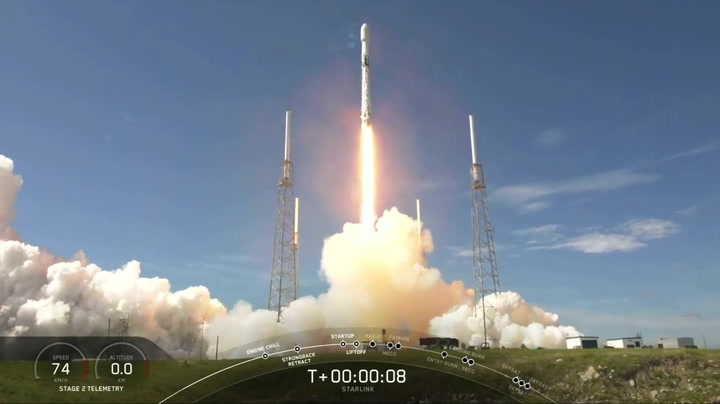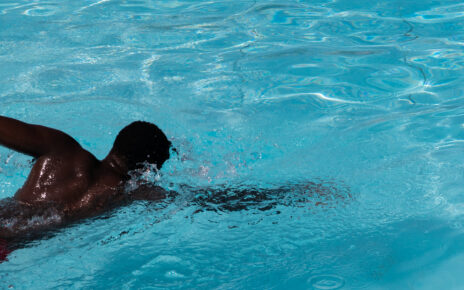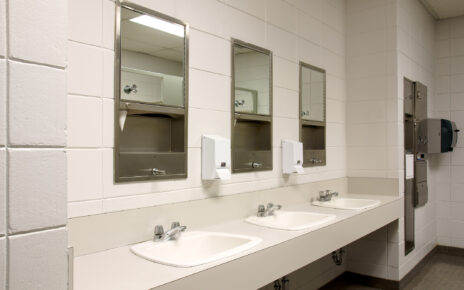SpaceX’s most-flown Falcon 9 rocket booster yet returns to Florida home port
By Amy Thompson
Behold! The SpaceX’s sooty Falcon 9, a six-time flier.
CAPE CANAVERAL, Fla. — SpaceX’s historic six-time flier — a Falcon 9 rocket first stage designated B1049 — returned to Florida’s Port Canaveral Friday (Aug. 21), after delivering a batch of Starlink satellites into orbit earlier this week.
The Falcon 9 booster appeared on the horizon just after sunrise and slowly sailed into the canal just after 8 a.m. EDT (1200 GMT) Friday, heading for its dock atop the SpaceX drone ship Of Course I Still Love You. The rocket launched 58 SpaceX Starlink satellites and three Planet SkySats into orbit on Aug. 18, then returned to Earth for a smooth landing on the ship in the Atlantic Ocean.
Small groups of onlookers were gathered at Jetty Park Pier Friday morning, scattered amongst locals there for some early morning fishing, and hoping to catch a glimpse of the booster’s return. The spot is not only a popular launch viewing location, but also a prime locale to view returning boats and first stage boosters.
Jetty Park is just the starting point for the hardcore space fans. Once the booster begins its journey down the channel, they quickly grab their gear and drive over to a different part of the port, across from the SpaceX docks, racing to arrive before the booster. (An easy task as the drone ship doesn’t move that fast.)
A returning booster always draws a crowd, and today was no different. At a grassy spot, near the SpaceX docks, a small audience was waiting to capture B1049’s triumphant arrival. As the drone ship parked in its slip, cameras clicked and excited onlookers chattered about the booster’s sooty exterior.
The booster’s appearance, once stark white, was marred — scorched and sooty from its multiple trips to space and back. SpaceX designed this latest (and most robust) iteration of the Falcon 9 to fly multiple times with little-to-no refurbishments in between.
That’s due to a slick series of upgrades added to the vehicle in 2018, which includes improved engines, a more durable interstage (a connector between the first and second stages), titanium grid fins and a more robust thermal protection system. This combination allows Falcon 9 to hold up better against the stresses of launch.
Related: See the evolution of SpaceX’s rockets in picturesClick here for more Space.com videos…
B1049, SpaceX’s most-flown booster, has now launched four batches of Starlink satellites into space along with the three small Earth-observing SkySats for Planet as part of a rideshare mission, as well as the Telstar 18 VANTAGE and Iridium-8 missions. And after pulling off yet another landing this week, it became the first Falcon 9 first stage to fly six times.
Perched atop Of Course I Still Love You, one of SpaceX’s two massive drone ships, the booster was held in place by a roomba-like robot called the Octograbber as it made its journey back home. (Following a successful landing on the ship’s deck, the robot is remotely driven and parked under the booster’s engines, securing the Falcon 9 to the ship’s deck.
Now that the Falcon 9 booster is back in port, it will be off-loaded and then prepped for travel. Crews will retract the legs before laying the booster on its side to be trucked back to one of SpaceX’s nearby facilities. From there it will begin the post-flight inspection process. Once that is complete, the booster will be inserted into the launch rotation.
Currently, SpaceX is saving its most experienced fliers to loft its own satellites, leaning on the boosters with fewer flights to loft paying customers, but we could see that change as its fleet of boosters fly more times and the company streamlines refurbishment procedures. Rapid reuse capabilities, coupled with the fact the company now has two drone ships to recover its first-stage boosters, means that the company can launch more frequently.
So far this year, SpaceX has launched 14 times, with two Starlink missions on the books in August. It’s latest mission marked the 99th orbital launch attempt in SpaceX’s history, and the 58th successful booster recovery.
SpaceX’s twin fairing catchers — GO Ms. Tree and GO Ms. Chief — also fared well, returning to Port yesterday, with two fairings in tow. Ms. Tree was able to catch one half of the clamshell-like fairings as it fell back to Earth, while Ms. Chief scooped the other half out of the ocean.
Follow Amy Thompson on Twitter @astrogingersnap. Follow us on Twitter @Spacedotcom or Facebook.com







